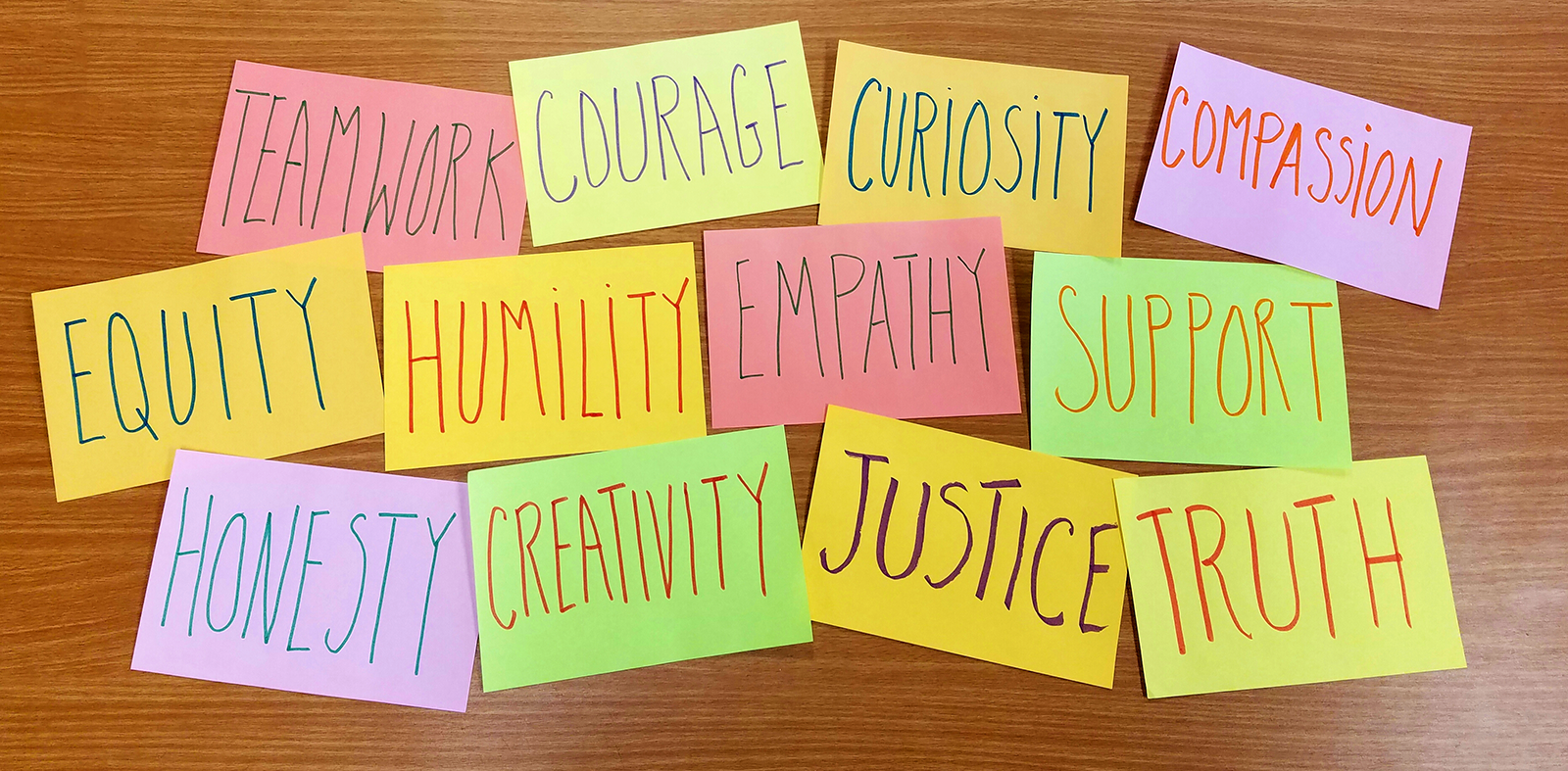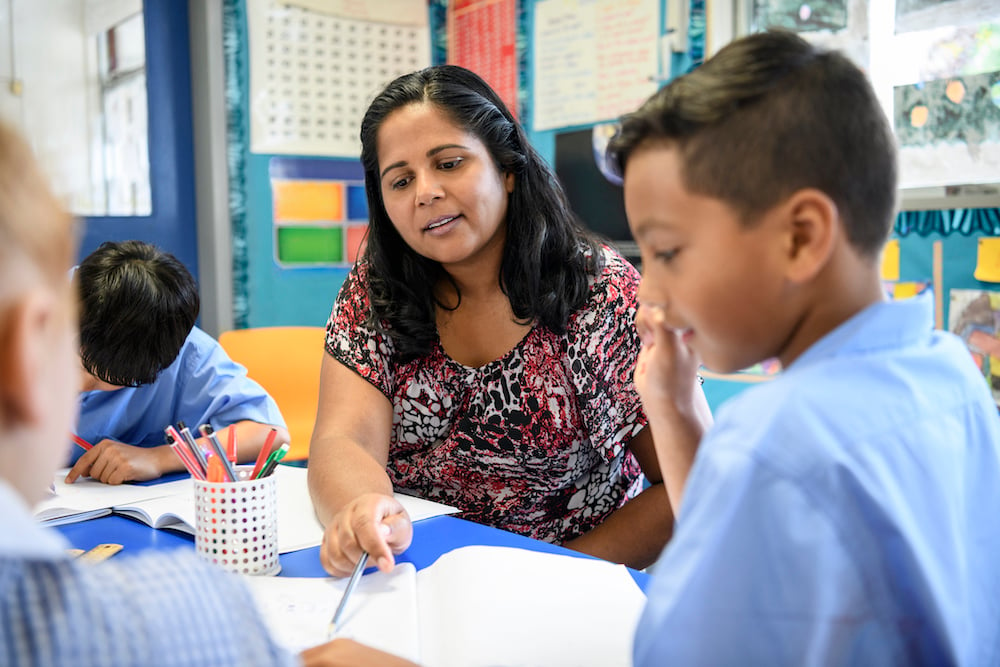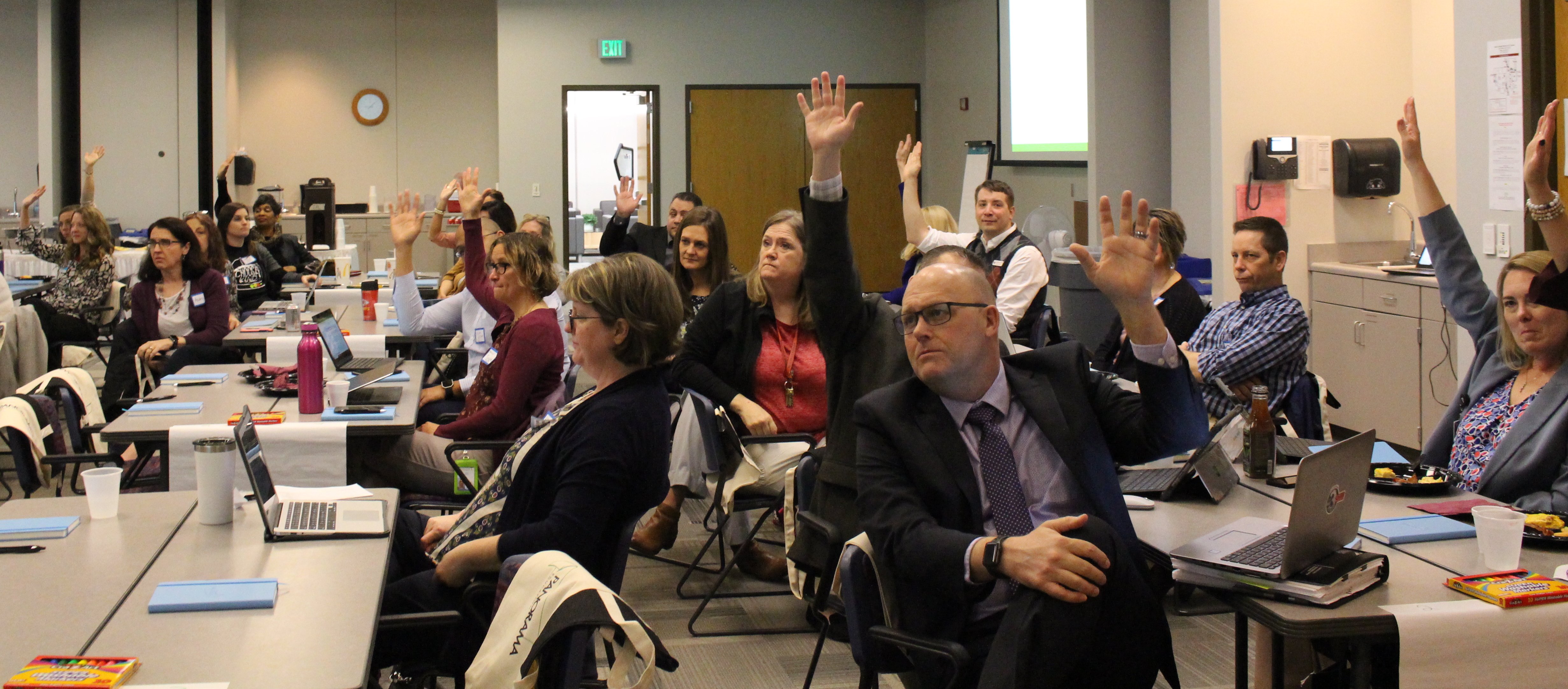This academic year, you may be looking for ways to proactively build community, strengthen relationships, and create safe learning environments for students.
Restorative practices provide students and caring adults with an intentional, inclusive, and respectful way of thinking about, talking about, and responding to behavioral issues. When integrated in a school community, restorative practices help to build and repair relationships, prioritize student agency, and de-emphasize punitive discipline in favor of communication to resolve conflict.
In this article, we’ll start by unpacking restorative justice versus restorative practices. Then we’ll dive into two specific examples, including instructions for implementation.
Table of Contents
What is Restorative Justice in Schools?
What are Restorative Practices in Schools?
Strategies for Implementing Restorative Practices in Schools
How to Use These Restorative Practices
|
Key Takeaways:
|
Access Five Strategies to Build Student Belonging
What is Restorative Justice in Schools?
|
Restorative justice is an alternative to using punishment-based approaches to school discipline and behavior management in K-12 classrooms. It focuses on repairing harm through inclusive processes that bring together students and educators. |
The intention of restorative justice is to shift the focus of student discipline from punishment to reflecting learning. It emphasizes accountability, making amends, and facilitating dialogue between affected parties.
The concept of restorative justice is based on three pillars:
- Harms and needs. Understanding the harm that was done requires empathy and awareness.
- Obligation (to make things right). This entails a moderated process that helps stakeholders understand, discuss, and resolve the problem
- Engagement. All parties—victim, offender, and the broader community— are involved in the dialogue and the healing process.
What are Restorative Practices in Schools?
|
|
Popular examples of restorative processes include affective statements, community-building circles, small impromptu conferencing, and setting classroom agreements or norms. In the Restorative Justice community, it can take three to five years to implement restorative practices within a school site.
Restorative approaches are designed to empower students to learn from their mistakes, to understand the impact of their actions, and to grow personally in their ability to problem-solve and make responsible decisions. The goal of any restorative practice is to build a sense of community in the classroom by:
- Providing pathways to repair harm
- Bringing together individuals impacted by an issue in a dialogue
- Achieving a common understanding
- Coming to an agreement about resolving the conflict and moving forward
Strategies for Implementing Restorative Practices in Schools
Now that we've defined restorative practices, let's look at how to apply the principles of restorative justice to build community and improve school climate.
Below are two high-quality restorative practices that you can implement in your school district. Drawn from our district partners and other expert organizations, these strategies are meant to strengthen relationships and create safe, inclusive, and equitable learning spaces for students. They can also be adapted for virtual use.
How to Use These Restorative Practices
If you are a district administrator, explore these strategies and start the conversation about the role of restorative practices in nurturing social skills and strengthening MTSS in your district.
For school leaders, bring these ideas to PLCs, staff meetings, or Student Support team meetings to strengthen relationships in your school community, and consider partnering with organizations such as the National Educators for Restorative Practices to facilitate training for your team on Tier 2 and Tier 3 practices.
For restorative practices facilitators, try these restorative practices (both in-person and virtually) to check in with students, strengthen relationships, improve classroom management policies, and create safe learning spaces for students to hone responsible decision-making and emotional skills.
Respect Agreements

Courtesy of Aldine Independent School District
Practice Overview:
This restorative practice engages all learners in the topic of respect. When implemented with fidelity, respect agreements can help each student feel comfortable as a member of the classroom community.
Implementation Instructions:
- Distribute a piece of paper to each student. Ask them to fold their piece of paper in half twice so that it has four sections.
- Instruct students to label each section as follows:
Student Respecting Student Student Respecting Teacher Teacher Respecting Student Everyone Respects Facility & Equipment - Explain to students that they will each be reflecting on what these forms of respect mean to them and look like. Refrain from sharing any examples with students at this time; give them space to wrestle with it.
- Ask students to work individually, taking a few minutes to reflect and then write down how each of these four sections might look in terms of behavior or actions. What would each look like or sound like? While students are doing this, complete your own sheet with examples.
- After students have been given ample time to brainstorm and reflect, divide them into groups of four or five. Invite students to share what they listed on their individual papers with their peers.
- Finally, come together as a group to review commonalities and create a combined class list!
Re-Entry Circles (or Community-Building Circles)

Courtesy of NEDRP
Practice Overview:
A Re-Entry Circle, or Restorative Welcome, is designed to support a student returning to campus from disciplinary actions such as suspensions and expulsions. The purpose of a Re-Entry Circle is to welcome and assist students in re-entering the school in a healthy and positive way after being removed.
Implementation Instructions:
Convene the Re-Entry Circle on the student’s home campus as soon as possible for the returning student, and if possible, one or two days prior to the student's return.
Participation in the Re-Entry Circle may include, but is not limited to:
- The student and their caregivers
- DAEP representative (or equivalent)
- Student's teachers (on a voluntary basis)
- Campus admin
- Circle facilitator
- Additional personnel identified by the student (maybe a peer, custodian, community member, counselor, etc.) who the student already has a relationship with and who can help assist with the transition plan.
The Re-Entry Circle should allow for the same structure as a relationship building circle with a talking piece, centerpiece, values, opening, and closing, with the addition of “Supports, Needs, and Responsibilities” rounds. These additional question rounds help identify the needs of everyone involved and help the support team to formulate a plan for how the student will be supported and by whom.
After supports, needs, and responsibilities are identified and assigned and an idea is agreed upon for how the plan will be kept "alive," close the circle. Set a date and time to meet again to review how the plan has been going, and to make any necessary changes.
|
Frequently Asked Questions: 1. How long does it typically take to implement restorative practices within a school site? In the restorative justice community, it can take three to five years to fully implement restorative practices within a school site, indicating a significant investment of time and effort to integrate these approaches effectively. 2. Are there any standardized templates or resources available for implementing restorative practices in schools? Yes, resources such as the Restorative Practices Toolkit provide templates and instructions for implementing restorative practices, offering strategies like respect agreements and re-entry circles to build community and improve school climate. 3. What roles do stakeholders play in a Re-Entry Circle within restorative practices? Participation in a Re-Entry Circle may include the returning student, their caregivers, school administrators, teachers, circle facilitators, and additional personnel identified by the student who can assist with the transition plan, such as peers, custodians, or counselors. 4. How can school districts effectively introduce and promote restorative practices to educators and staff? School districts can introduce and promote restorative practices to educators and staff through professional learning communities (PLCs), staff meetings, or student support team meetings, as well as by partnering with organizations specializing in restorative justice training to facilitate training sessions on Tier 2 and Tier 3 practices. |







